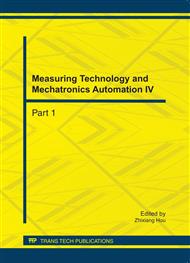p.1177
p.1182
p.1186
p.1191
p.1197
p.1202
p.1213
p.1217
p.1222
Optimization of Vehicle Tailpipe Hook Stiffness
Abstract:
There are problems with the tailpipe hook when the car is in durability test. In the paper, the exhaust system vibration analysis model is built first. It is found that the constraint force on the tailpipe hook which is cracked is bigger and the local stiffness is lower according to the frequency response analysis. After the structure optimization, the stiffness of the tailpipe hook is strengthened. Both the comparative analysis and idling test show that the optimized hook could explicitly reduce the vibration of the exhaust system which transfers to the car floor and improve the fatigue life of the exhaust system. The optimization method could be used for the similar fatigue problems.
Info:
Periodical:
Pages:
1197-1201
Citation:
Online since:
October 2011
Authors:
Keywords:
Price:
Сopyright:
© 2012 Trans Tech Publications Ltd. All Rights Reserved
Share:
Citation:


